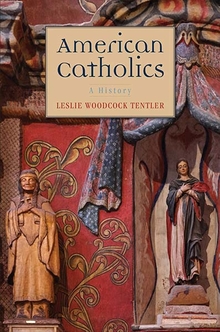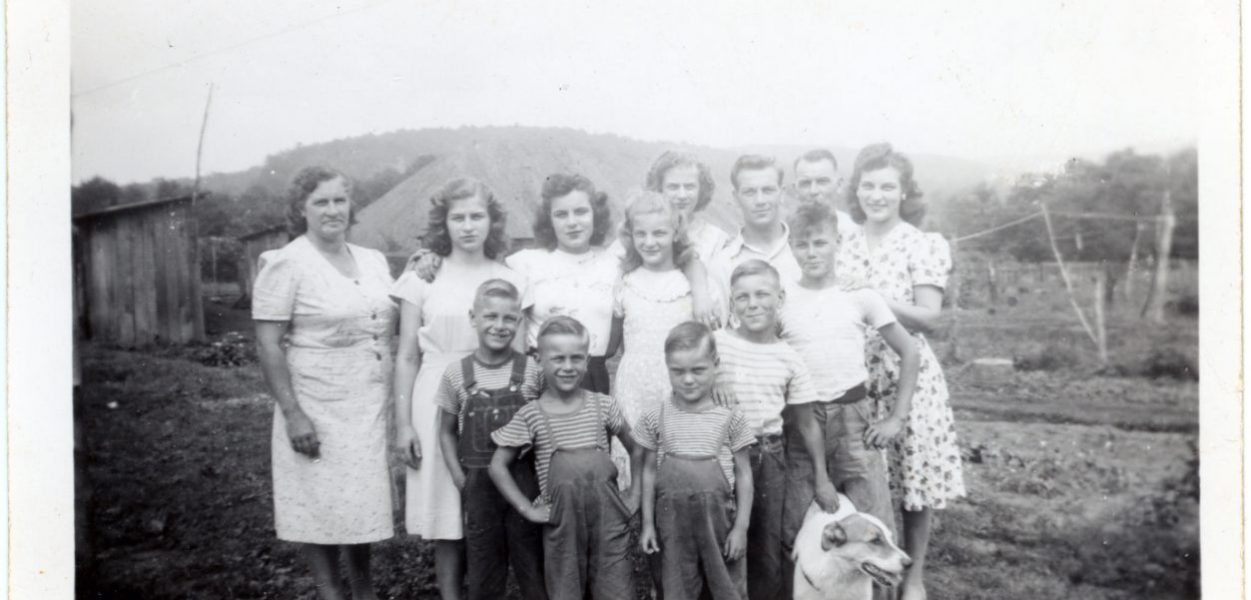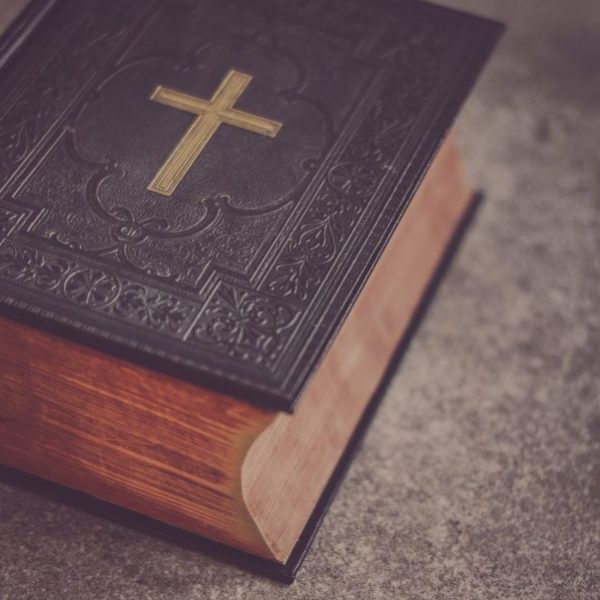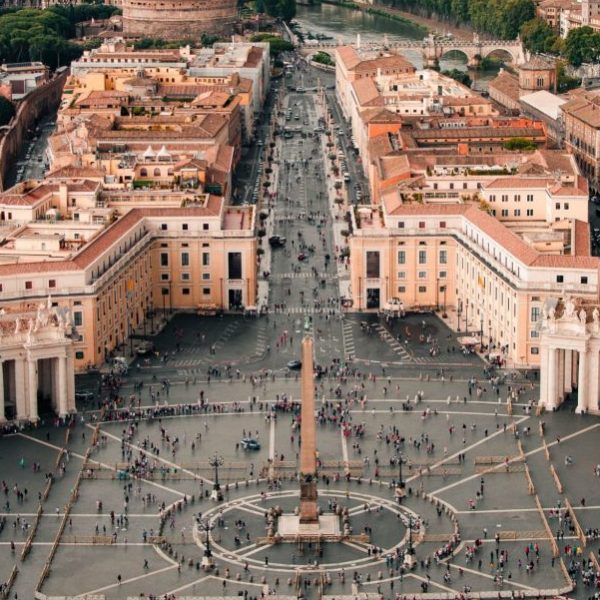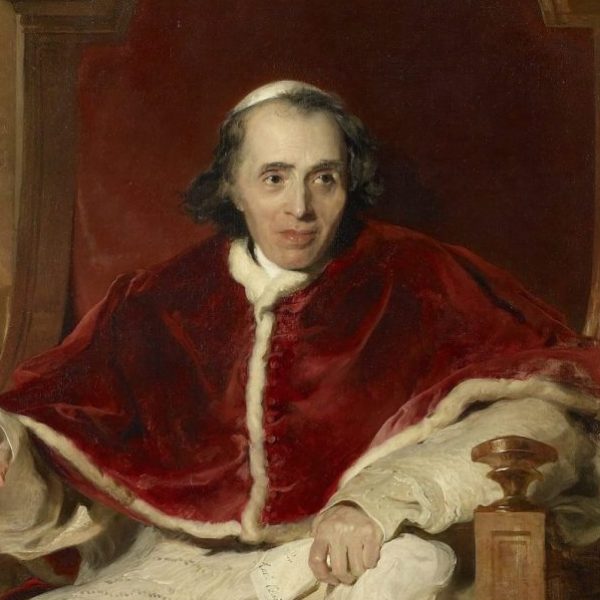Coming to Terms with the Catholic 1950s
Leslie Woodcock Tentler—
The streets of my suburban childhood were peopled by two religious tribes—the Catholics, who were in the majority, and the Protestants, a quasi-tribe to which every non-Catholic belonged. (This was back in the 1950s, when suburban Jews generally settled among their own and “nones” were an endangered species.) We Protestant kids took comfort in our assumed social superiority—a conviction we doubtless absorbed from adult conversation and perhaps from the often-shabbier homes of the Catholic families on the block, most of whom had numerous children. Nonetheless, we were impressed by the Catholics’ unshakeable solidarity and their overweening confidence. “Martin Luther is the head of your church,” one juvenile theologian told me scornfully—I was in fact a Presbyterian—“but Jesus Christ is the head of ours.” Then there was the visible testimony to Catholic distinctiveness: their school uniforms (unfashionable, but bespeaking a people), nuns in full habit, churches filled every Sunday at each of as many as eight Latin Masses, queues for confession on Saturday night, even the closing of local stores on Good Friday afternoon—the result, as everyone knew, of a Catholic pressure campaign.
My neighborhood peer group was hardly alone in its assessment of Catholics. Catholic peoplehood and spiritual élan were staple assumptions of media coverage in the 1950s. As respected a commentator as Will Herberg offered the judgment that American Catholics, quite unlike Protestants, were equipped to withstand the debilitating spiritual effects of post-war American affluence. Catholics, after all, attended church more regularly than Protestants did and evinced a significantly higher degree of doctrinal conformity. Indeed, in Herberg’s view, Catholics’ “strong sense of assurance” provided a striking contrast to the “growing minority consciousness” of the nation’s Protestants. His predictions proved quite wrong, of course: Catholic practice by the late 1960s was approaching something like free-fall decline, and the Catholic Church by then was probably the most polarized of the nation’s denominations. Writing in 1955, Herberg could not have foreseen the reforms of the Second Vatican Council (1962–65), which had the effect in the United States of greatly accelerating the collapse of a seemingly vibrant Catholic sub-culture. But that observation underscores the real question: how robust was the health of that sub-culture at its zenith in the 1950s?
This question has haunted me during much of my life as a historian of American Catholicism and indeed during much of my adult life as a Vatican II Catholic. Childhood impressions can be tenacious, and my own recollections of 1950s Catholicism possessed a certain seductiveness. The more fragmented our national culture appeared to be, the more that distant Catholic world looked attractively rooted and reassuringly stable. I never doubted that I was romanticizing things—I knew that vanished world had its costs, especially for women. And I strongly suspected—contra Will Herberg—that the dramatic growth in Catholic income and educational attainment generated by post-war prosperity could not help but cause many Catholics to be more conscious of those costs and perhaps decide that they were too high. Still, I steered away from the post-war years in much of my scholarship, feeling far more at home in the vanished world of immigrant Catholicism, to which I had only the most tenuous personal connections. It was only in the late 1990s, when I embarked on a history of Catholic pastoral practice with regard to contraception, that I engaged in extensive research on the years that encompassed my childhood. Indeed, it was childhood recollections that prompted my interest in the subject—an interest that puzzled certain of my younger colleagues, who seemed blissfully unaware of the extent to which the Catholic prohibition on contraception had dominated Catholic life in the middle decades of the twentieth century. Growing up where and when I did, I knew that Catholics couldn’t practice birth control long before I knew precisely what birth control was.
It was my work on the “birth control problem” that brought home to me what should have been obvious—that the Catholic sub-culture of my youth was riven with tensions over issues of sex and, by extension, gender. If those tensions burst into public view only in the early 1960s, they were quite clearly there before. Those tensions, moreover, have continued to fester since the turbulent years that followed the Second Vatican Council—they are, indeed, a principal cause of the marked erosion in Catholic affiliation and practice that has characterized the half-century since the Council and the radical reassessment of the church’s teaching authority in which most Catholics have engaged. Several waves of clerical sex abuse scandals, the first of which dates from the 1980s, have only made matters worse.
It seems obvious that Catholic teaching on contraception, coupled with its vigorous enforcement in the confessional, would eventually generate trouble, at least in retrospect. Like other Americans, Catholics in the 1950s married earlier than ever before, thereby extending their years of potential childbearing, and increasingly expected to provide their children with college educations. They lived, moreover, in a culture that prized marital intimacy as essential to full human happiness. How could as prescient an observer as Herberg not have intuited a looming conflict? Perhaps he would have been helped by access to some revealing data from a 1952 poll, commissioned by the Catholic Digest, which queried a cross-section of the nation’s Catholics on a wide variety of topics. The responses to two particular questions so shocked the Digest’s priest-editor that he declined to make them public. Asked whether the use of contraceptives in marriage was invariably sinful, 51% of the respondents said no. Almost as many said the same with regard to remarriage after divorce. Had Herberg seen these responses, which I found buried in the Archives of the Archdiocese of Philadelphia, he might have been somewhat less sanguine about Catholic prospects in the context of American affluence.
Leslie Woodcock Tentler is professor emerita in the department of history at the Catholic University of America and the author of Catholics and Contraception: An American History.
Further Reading:
